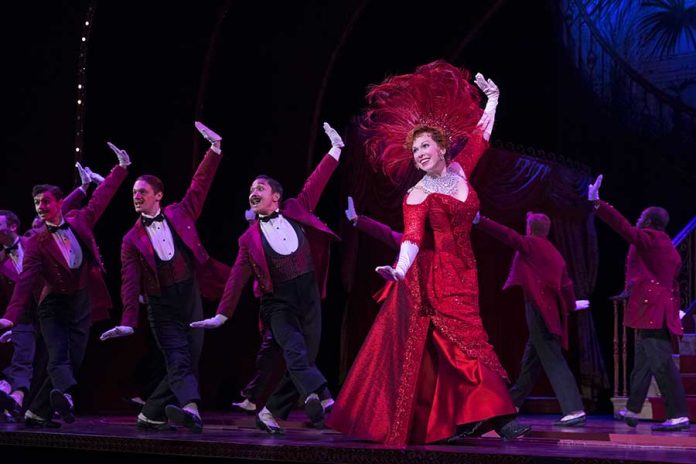Out composer Jerry Herman forged one of the most distinguished — and lucrative — careers in musical theater history. The foundation of his success was built on “Hello, Dolly!”, the 1964 adaptation of Thornton Wilder’s “The Matchmaker” that became a worldwide juggernaut continuing to this day.
The original production ran on Broadway for seven years and earned 10 Tony Awards, a record it would hold until the debut of “The Producers” in 2001. It cemented the star status of its leading lady, Carol Channing — as well as her status as a gay icon.
Herman had other hits — including “Mame” and the pathbreaking gay-themed “La Cage aux Folles” — but none surpassed “Hello, Dolly!” Channing, who died at 97 in January 2019, also never quite got out of the role’s shadow. She continued to appear as Dolly Gallagher Levi in Broadway and touring productions well into her 70s.
Herman himself died on Dec. 26, 2019, at 88. He was a long-time HIV survivor, having been diagnosed in 1985, and went public with his positive status in 1992.
I wish I could say the current road company of “Hello, Dolly!” at the Academy of Music served as an ideal tribute to the memories of Herman and Channing. Instead, it suffers the fate of many a national tour. The music is too loud. The performances are big and nondescript. Everything feels tired.
The production, directed by Jerry Zaks, originated on Broadway in March 2017, with Bette Midler as the title matchmaker and out actor David Hyde Pierce as her intended mark, Horace Vandergelder. It’s been on the road since September 2018.
It wouldn’t be fair to say the seams are showing — if anything, the large ensemble perform Warren Carlyle’s choreography with a kind of animatronic perfection reminiscent of an Epcot exhibit — but the current version lacks sparkle and charm.
Carolee Carmello dominates the proceedings as Dolly. A three-time Tony nominee with an extensive Broadway résumé, she proves indefatigable over the course of the long role, singing more than a half-dozen songs in a vibrato-heavy mezzo soprano.
Missing, though, is a certain sense of vulnerability that makes the character interesting. Carmello is an adept comedian — she almost always goes for the laugh, and she almost always gets it. But the libretto (by Michael Stewart) punctuates the comic scenes with moving direct-address monologues in which Dolly, long widowed, implores the spirit of her late husband to bless her intention to remarry. Many of these speeches were taken directly from Wilder’s play, and they’re uniformly lovely and soulful.
Carmello doesn’t seem entirely comfortable playing the pathos. She’s more at home in the extended, almost vaudevillian expressions of humor. A supreme Dolly should be able to do both.
Out actor John Bolton comes across as too gruff for Vandergelder. His eventual acquiescence to Dolly’s will, however inevitable, feels unconvincing. As Cornelius Hackl and Irene Molloy, the secondary couple who represent young love, out actor Daniel Beeman and Analisa Leaming generate precious little chemistry; Leaming also seemed tested by the high tessitura of Irene’s lovely solo number, “Ribbons Down My Back.”
Tony Award winners Santo Loquasto (sets and costumes) and Natasha Katz (lighting) deliver a handsome physical production that fits nicely into the Academy’s deep stage. But I felt with this assumption, as I did on Broadway, that Loquasto’s scenic design relies too heavily on a series of painted scrims that work overtime to establish the story’s setting.
The Philadelphia engagement of this tour continues through March 1, after which it travels to Providence (March 3-8), Buffalo (March 10-15) and its final destination, Rochester (March 17-22).
For tickets and information about “Hello, Dolly!”, visit https://hellodollyonbroadway.com/tour .

